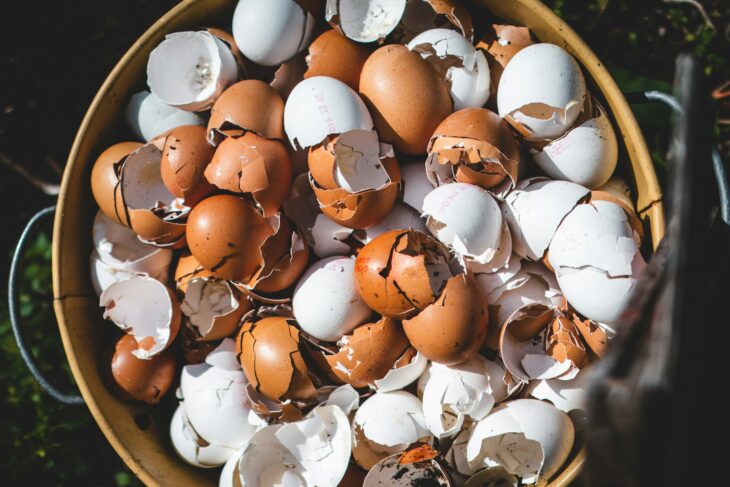Green energy technologies support a sustainable planet, but they also come with drawbacks. Notably, wind turbines and electric vehicles rely on advanced magnets that contain rare earth elements, or REEs. REEs are a set of 17 metals with unique properties, such as high magnetism and specific electronic behavior.
Despite their name, REEs aren’t actually “rare” in terms of scarcity. Scientists call them “rare” because they exist in low concentrations, and REE ore needs extensive refinement. REE mining, refining, and recycling can damage the environment because they require large amounts of toxic chemicals. As a result, scientists are looking for safer ways to process REEs.
Previous researchers demonstrated that eggshells can be used to capture heavy metals, so scientists think they might also be useful in extracting REEs. Over 1.7 trillion hen eggshells are discarded annually. Therefore, using these shells to extract REEs would be a win-win scenario because waste products would gain a new life, and the green energy transition would gain a safe, reliable method to extract raw materials.
Researchers from the University of Dublin recently performed experiments to test whether waste eggshells can capture REEs. They set up solutions bearing 3 REEs used in advanced magnets: lanthanum, neodymium, and dysprosium. Then they added crushed eggshells to the solutions to see how well the eggshells absorbed the REEs. They explained that this experiment mirrored a step in the refinement process where REEs are recovered and concentrated from REE-rich fluids produced through mining and recycling.
In some experiments, they only added an inorganic form of the main mineral in eggshells, called calcite. This strategy allowed them to compare results between mineable calcite and biologically-produced calcite in the eggshells. Calcite is a mineral primarily composed of carbon and oxygen, called a carbonate. Carbonates also contain a cation, which is an atom or molecule that has lost one or more of its electrons, so it has a positive electric charge. The cation in calcite is calcium, but in other carbonates, the calcium can be replaced by REEs. For example, the REE carbonate kozoite contains lanthanum and neodymium cations.
The researchers tested the REE solutions with eggshells and calcite at 30°C, 90°C, 165°C, and 205°C (around 90°F, 200°F, 330°F, and 400°F) from 3 hours to 3 months to determine the speed and effectiveness of REE absorption under different conditions. Then, they used 2 analytical techniques to see where and how much REEs had been captured by the eggshells and calcite under each condition. They examined the surface and composition of the materials at very high resolution with a focused electron beam, using a method called scanning electron microscopy. They also mapped the REEs by vaporizing small sections of the eggshells, using a laser ablator, and quantifying each element in the vapor by its mass, using a mass spectrometer.
At 90°C, they found that kozoite formed on the surface of the eggshells. At 165°C and 205°C, the eggshells were completely dissolved and replaced by kozoite. At 205°C, kozoite was slowly replaced by a more stable REE-bearing mineral called hydroxylbastnäsite. They repeated the tests at 30°C to determine if this method is viable at room temperature, to avoid heating costs. At 30°C after 95 days, the results resembled the test at 90°C after 1 day.
The researchers found that the eggshells collected a higher concentration of REEs than the inorganic calcite. The REEs were concentrated in grooves formed in the calcite and organic layers inside the eggshell. They also found that at higher temperatures, eggshell calcite was completely replaced by REE carbonates. This process eliminated the manual calcite removal needed when using inorganic calcite to concentrate REEs.
The scientists concluded that eggshells provide an attractive material for REE capture, since they use an existing waste product with no heating cost given enough time. They suggested that widespread adoption of this method could result in cost-effective REE recycling and refinement and help fill the growing demand for REEs in the transition to green energy.


